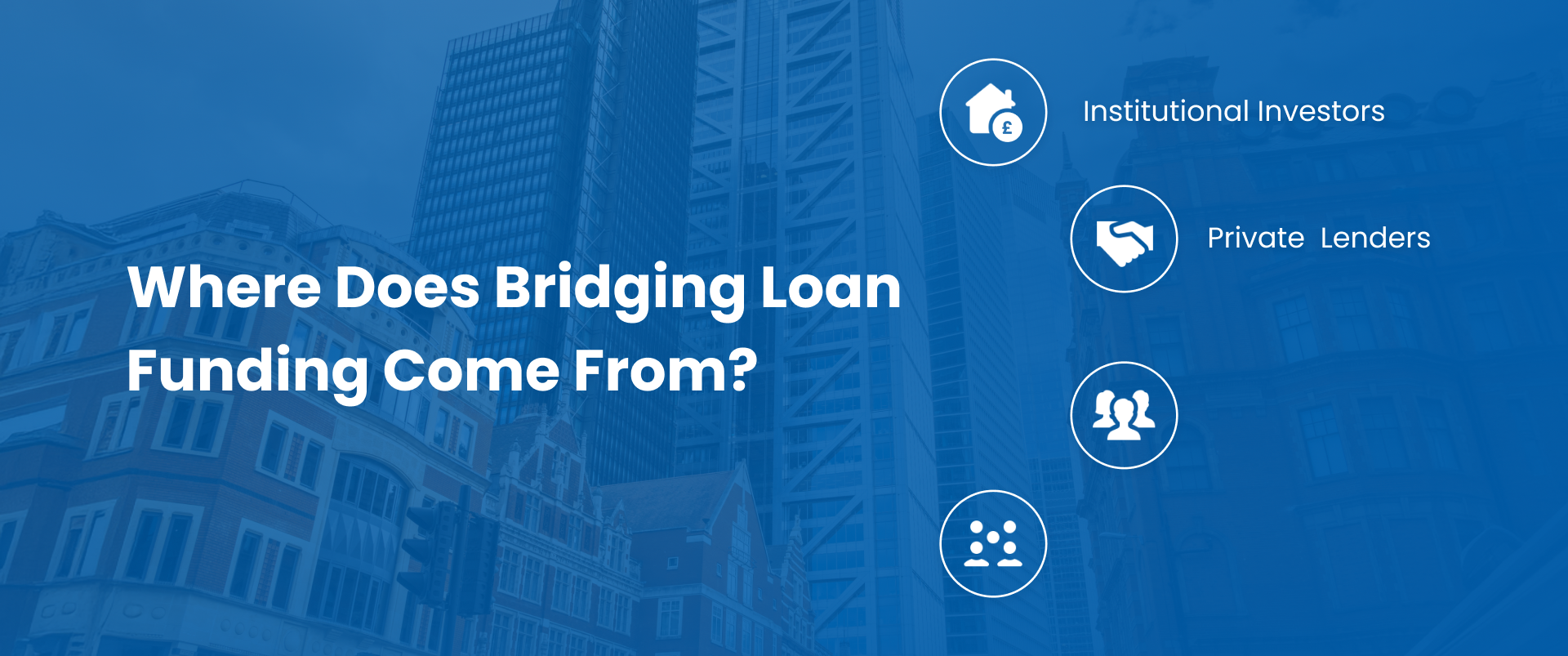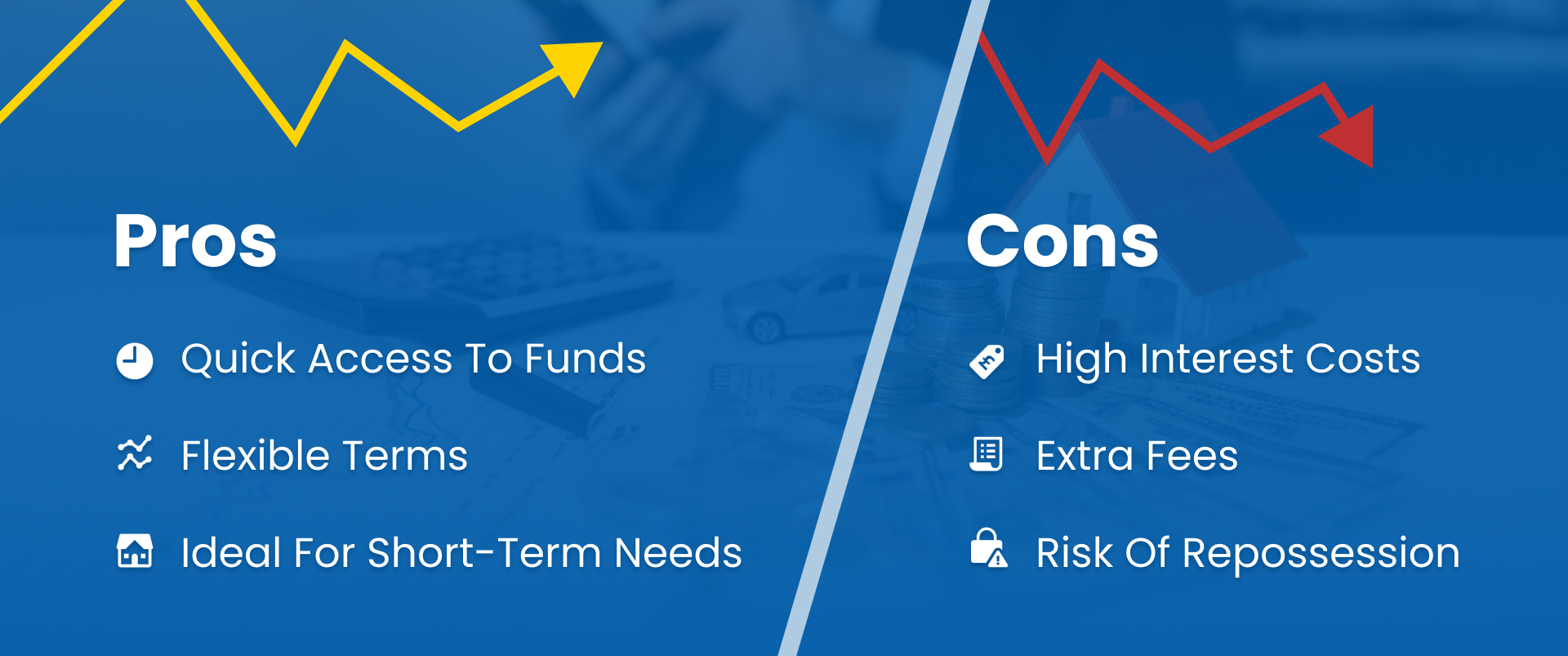Introduction:
In today’s article we will be exploring the world of UK Bridging loan companies, including types of providers, common product structures and the pros and cons of bridging.
Bridging loans provide fast finance secured against property. They’re intended to be a short-term fix to a temporary shortfall in funds.
Bridging loans are common in residential property transactions when there is a break in the purchase chain, then can also be utilised to support a business’ growth/investment goals, purchase a property at auction or for other urgent cash flow requirements.
How Bridging Loan Companies Operate
Funding Sources
Every bridging loan company will operate slightly differently in terms of their funding source, meaning where they acquire their money prior to lending to borrowers. Some potential sources include; Institutional investors, banks, high-net-worth individuals, Peer-to-peer (P2P) platforms and family offices. At BIG Property Finance, our funding comprises a combination of Institutional investors and high-net worth individuals.
A benefit of our funding structure is that we have far more flexibility in dictating the criteria in which we provide our loans and can use our own discretion and judgement when deciding to lend. This allows us to consider projects that may fall outside of standard loan criteria or make exceptions to our normal policy based on individual circumstances.

Types of Bridging Loan Providers in the UK
- Private banks – specialised banking and financial service providers that cater exclusively to high-net-worth individuals (HNWIs). They differ from high‑street banks by offering a tailored experience through direct access to relationship managers, bespoke lending, and wealth planning—typically requiring substantial financial thresholds to qualify.
- Specialist lenders – non-mainstream finance providers who offer tailored bridging loans outside the rigid criteria of high street banks or building societies. Such as BIG Property Finance, we have a focused product range that is intended to offer flexible and client specific finance for those requiring short-term property loans and development finance.
- Peer-to-peer platforms – Online intermediaries that connect individual and institutional investors directly with borrowers needing short-term, asset-backed loans, often secured against property. They can offer the advantage of competitive rates.
Loan Mechanics
Loan mechanics refer to how a bridging loan product is structured, managed, and repaid.
Loan-to-Value (LTV) & Security
Typically secured by residential or commercial property up to ~75% LTV
The loan-to-value ratio is a financial term used to express the ratio of a loan to the value of an asset purchased. So a loan at 70% LTV means you are borrowing the equivalent of 70% of the property’s value. The higher the LTV the higher risk the loan, from the lender’s perspective, and so this can warrant a higher interest rate or more stringent criteria.
Interest & Repayment Structures
- Monthly interest charged at circa 0.4–2% per month
- Option to pay monthly or retain interest (all interest repaid at end of term.)
Term Length & Loan Types
- Terms range from 1 month to 24 months (most ~6–12 months)
Closed vs Open Bridging
Closed Bridging Loans: Closed bridging loans come with a fixed repayment date, making them ideal for borrowers who have a clear exit strategy for repaying the loan. Most common in residential property transactions where there is a break in the chain, a sale may be agreed against their property but there are delays to expected completion, therefore the exit is already lined up.
Closed bridging loans are usually lower-risk for lenders compared to open bridging loans (which have no set repayment date) because the exit plan and repayment timing are defined upfront. Due to this reduced risk and certainty, interest rates may be somewhat more favourable than with open bridging loans.
Open Bridging loans:
In contrast, open bridging loans do not have a fixed repayment date, making them suitable for borrowers who need temporary financing but lack a definite exit strategy. These loans are often used in situations where the borrower is awaiting uncertain events, such as the sale of a property without a confirmed buyer, or the securing of a term mortgage that has not yet been finalised.
First vs Second Charge
- First charge: The sole or primary secured loan against a property. If the property was to be repossessed, the first-charge lender would have the primary right to have their loan repaid, followed by the second-charge lender.
- Second charge: A second-charge bridging loan is secured lending, taken in addition to an existing loan you have outstanding against your property with a different lender. This can often result in higher costs and needs mortgage lender consent.
A second-charge is based on the difference between the value of the property and the amount you owe on your first mortgage/charge. This additional charge ranks after your existing secured loan.
Pros & Cons of Bridging Loans
Pros:
- Fast access to capital (days/weeks)
- Flexible terms and repayment structures
- Enables bridging property chains, auctions, or refurbishments
Cons:
- High cost vs. mortgages
- Multiple fees add up (valuation, legal, broker, exit)
- Secured against property—repayment failure risks repossession

Tips for Choosing a Bridging Loan Provider
- Reputation and Client Reviews: Importance of testimonials, case studies, and industry recognition. Read reviews and testimonials about potential lenders to gauge their reliability and customer service.
- Transparency of Fees: Compare rates, fees, flexibility, and responsiveness.
- Communication and Service Quality: Need for clear, consistent communication throughout the process. How will the Lender stay in touch, how regularly will they be providing updates?
Conclusion & Practical Tips
In conclusion Bridging loans can be an invaluable short-term tool to realising your property goals and investment opportunities, as well as being potentially expensive. Borrowers may rush into selecting a lender without comparing options or understanding different loan types. Whilst you may have a time sensitive transaction and be keen to find a quick deal, you can’t be too hasty selecting the right lender.
Tips for borrowers:
- Be very clear on your exit strategy (how you will repay your loan.) E.g., sale, refinancing, or property development completion.
- Understand all costs upfront—interest, arrangement/valuation/legal/exit fees. Use comparison websites and consult a bridging loan specialist for advice.
- Thoroughly research your bridging loan provider – Compare multiple lenders and bridging loan products to find the most suitable option. A broker or financial advisor may be able to help you compare multiple loans and firms very quickly.
Looking to learn more about bridging finance? Our team is happy to answer your questions. Contact us for a no-obligation discussion about your options.
At BIG Property Finance we are happy to receive enquiries through telephone, email or enquiry form on our website.
We aim to provide indicative loan terms within hours and a potential loan offer in a matter of days. We look forward to hearing from you. info@bigpropertyfinance.co.uk – 0121 348 7830.



